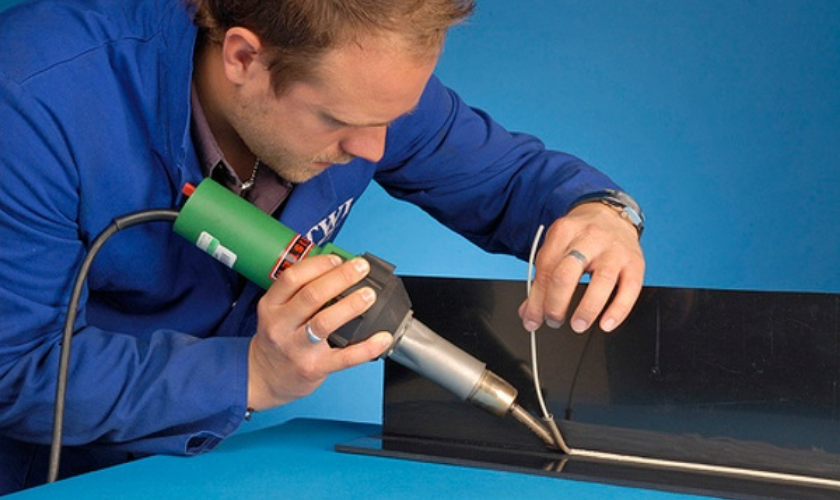Plastic welding is a process used to join two pieces of plastic material together by using heat and pressure. The heat softens the plastic, and the pressure is used to fuse the two pieces together. Different plastic welding techniques include hot air welding, extrusion welding, vibration welding, ultrasonic welding, and laser welding. The choice of welding method depends on the type of plastic being used and the desired end result. We at Jairaj one of the leading plastic welding service provider in Faridabad, Gurgaon, Manesar, Aurangabad, Rudrapur & Sanand. We are specialized in Hot plate plastic welding, Ultrasonic Welding & Vibration welding.
Hot Plate Welding: Hot plate welding is a type of plastic welding process that uses heat and pressure to join two pieces of plastic. The process involves heating a flat plate to a temperature high enough to soften the plastic, then pressing the two pieces of plastic together using the hot plate. The heat and pressure cause the plastic to fuse and form a strong bond. This method is commonly used to weld thermoplastics such as polyethylene, polypropylene, and PVC. The hot plate temperature, pressure, and welding time must be carefully controlled to ensure a good weld.
Vibration Welding: Vibration welding is a plastic welding process that uses high-frequency vibration and pressure to join two pieces of plastic. In this method, one of the pieces is held stationary while the other is vibrated at a high frequency and amplitude. The two pieces are then brought into contact under pressure, and the friction generated by the vibration melts the plastic at the joint, allowing the two pieces to fuse together.
The vibration and pressure are continued until the plastic has cooled and solidified, creating a strong bond. Vibration welding is commonly used to join thermoplastics, especially large and complex parts, and is known for producing strong, consistent welds with minimal residual stress.
Ultrasonic Welding: Ultrasonic welding is a plastic welding process that uses high-frequency mechanical vibrations to generate heat and fuse two pieces of plastic together. In this method, an ultrasonic generator produces high-frequency mechanical vibrations that are transmitted to a welding tool, called a sonotrode, which is pressed against the two pieces of plastic.
The vibrations cause the plastic at the joint to melt and flow together, creating a strong bond. The process is highly repeatable and can produce strong, consistent welds with minimal residual stress. Ultrasonic welding is commonly used for welding small, delicate parts, and is well suited for joining dissimilar materials and materials with low melting points.


